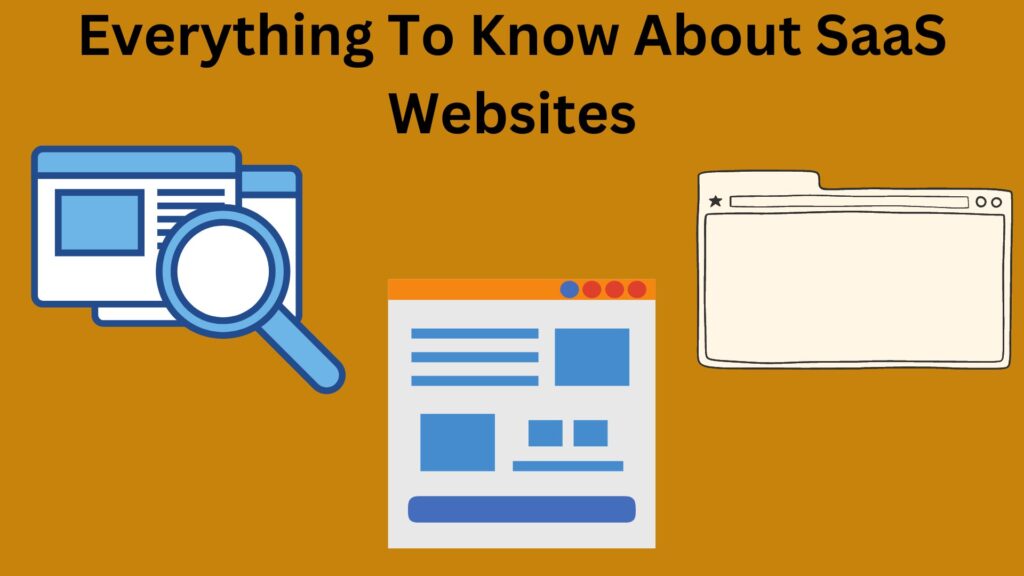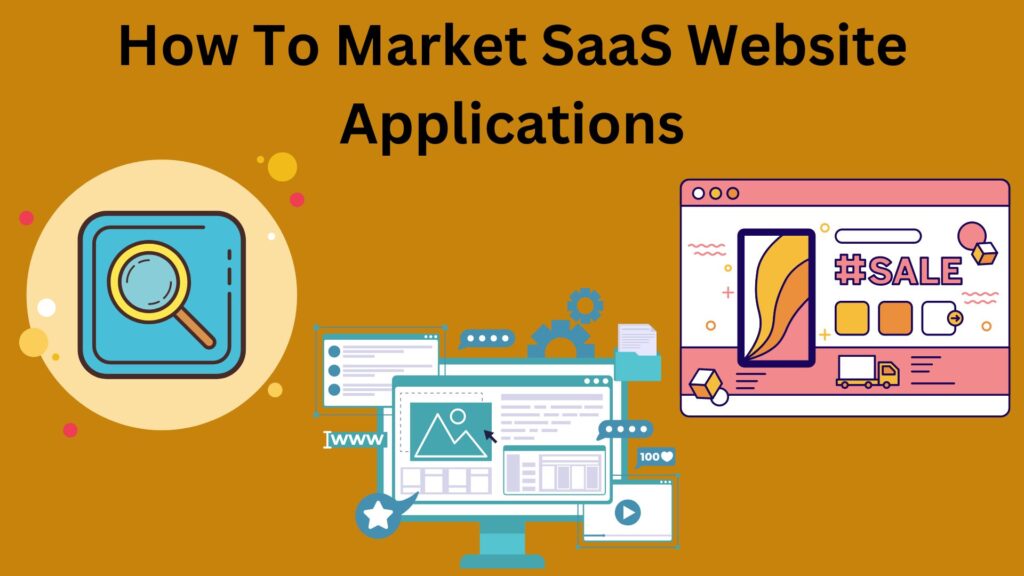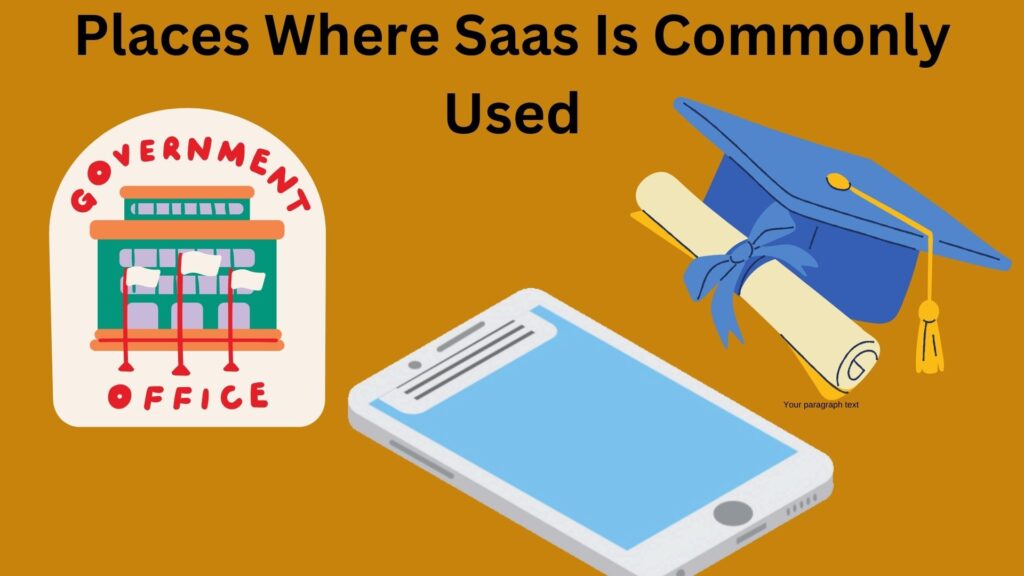What are Software As A Service (SaaS) websites? What are some of the advantages and disadvantages of SaaS websites? Let’s discuss these questions and more in this overview of what SaaS websites are, how they’re different from other website types, and how you can take advantage of the unique features that SaaS websites offer your business or organization.
To understand what a “Software as a Service” website is, it is important first to understand what the term “Software as a Service” means.
Software as a Service, or SaaS, is a type of subscription software that allows users to access and use the software from a remote location.
The software is typically hosted by the provider and can be accessed by users through a web browser. SaaS websites are websites that offer Software as a Service. In other words, they offer access to software that can be used remotely.
This type of website is becoming increasingly popular as more and more businesses adopt SaaS solutions. There are many benefits to using a SaaS website. Perhaps the most obvious benefit is that it eliminates the need for users to install and maintain the software on their computers. This can save businesses a significant amount of money in hardware and support costs.
In addition, SaaS websites are often easier to use than traditional software applications since they can be accessed from any web browser.
If you’re considering using a SaaS website for your business, there are a few things to keep in mind. First, make sure that the website you choose offers the features and functionality you need. Second, be sure to read the terms of service carefully before signing up for an account.
Finally, remember that you may need to pay for some features or services separately from your subscription fee.
What Is Software As A Service?
SaaS is a software distribution model in which a service provider hosts and manages the software for its customers. Customers may access and utilize the program via a web browser, while the service provider handles infrastructure and security.
The SaaS model has several advantages for both businesses and customers. For businesses, it allows them to focus on their core competencies and outsource the management of their software to a third party. It also reduces upfront costs and makes it easier to scale the software as needed.
For customers, SaaS provides a pay-as-you-go model that can be more cost-effective than traditional software license fees. It also offers increased flexibility, as customers can access the software from anywhere with an internet connection. And because the service provider manages all updates and security, customers don’t need to worry about maintaining the software themselves.
How Do I Get Started With A SaaS Website?
Software As A Service (SaaS) websites have become an essential part of modern businesses. These websites offer a range of services, such as access to software applications and cloud computing, allowing businesses to store, manage, and share data easily.
When selecting a SaaS website for your business, there are several important factors to consider. First, you must ensure the SaaS website is secure and provides reliable access. Security measures should include SSL encryption, two-factor authentication, and frequent security updates. Additionally, the SaaS website should have high uptime percentages, a robust help center, and knowledgeable customer support staff.
You’ll also want to determine what features the SaaS website offers. Many websites provide customizable tools, so you can customize the service according to the specific needs of your business. Other features include billing options, integrations with other services, scalability, and analytics tools. It’s important to choose a SaaS website that is compatible with any existing systems or applications you’re already using.
Finally, consider the pricing model. Many SaaS websites charge on a subscription basis, which may be based on usage or the number of users. Compare pricing models to determine the most cost-effective solution for your business.
You may verify your company is choosing the best Software As A Service website for its purposes by researching other SaaS websites and comparing their features and pricing.
What Are The Benefits Of Using a SaaS Website?
Software As A Service website is crucial to modern business since it eliminates hardware expenses. This can greatly reduce the time used in installing and maintaining the software used for running their businesses.
- Highly Scalable: SaaS websites offer a variety of subscription plans. This will give their customers the option to scale their businesses based on their demands. Scalability enables micro businesses to take on the cheapest options for a start. The more expensive options can be scaled as the business grows.
- Technology Upgrades: Software As A Service websites randomly perform software updates to their platform. This can keep the customers up to date with the latest technology. This eliminates the burden of constantly checking for updates and incurring software upgrade costs.
- Easy Integration: SaaS websites make it easier for their customers to be able to integrate with other software. This increases the likelihood of upgrades without the hassle of learning how different software works.
- Easy Accessibility: Since Software As A Service websites are internet based, this makes them more easily accessible to their customers. Customers can run their businesses from anywhere in the world as long as they have an internet connection.
- Consistent Pricing: SaaS websites offer plans ranging from monthly plans to yearly plans. This can help businesses or their customers predict their future expenses. This can bring consistency to the outcome of the business’s profits, leading to a more predictable future for the business.
SaaS Websites’ Difficulties
Software As A Services websites, just like any other business, may face some challenges. These challenges include:
Change Of User Interface
Changing the user interface can result in customers experiencing difficulties while using the website. For example, the change in design could cause those who had been previously navigating through a previous version of the website to find it hard to navigate and use features on the new design.
Users might need to spend time learning how to use or retraining themselves with the new software or webpage layout, which will cost them time and might even lead them away from a company’s service altogether.
Because most web-based systems require regular maintenance, these web-based services require upkeep after each software update or change made by an employee; otherwise, these changes may break functionalities on a site and interfere with the customer experience because the customer is likely unaware of these changes until they interact with them firsthand.
Changing Cloud Service Providers
This becomes a major concern when large amounts of customer data are being transferred. For SaaS websites, developers need to keep up with the latest technology and trends.
They need to constantly update their software and services to stay competitive and offer the best services to their customers. For businesses, it’s important to understand how a Software As A Service website works and how it can benefit them. SaaS websites can make tasks easier and more efficient, reduce costs, and help businesses deliver better customer service.
This will conflict when the owners try to change their service provider. But upgrades must be done to maintain the competitiveness of the website.
Service Disruptions
The server going down can be a disadvantage for businesses using the SaaS website. This can cause issues with timing for the customers’ projects, and in severe cases, it can lead to losing them. A Software As A Service website should always be aware of any website downtime.
What Are Some Common Features Of A SaaS Website?
Software as a Service (SaaS) websites provide users with access to a wide variety of cloud-based software applications and services. These web-based platforms allow users to access the software from any device, eliminating the need for physical installations and updates. As such, SaaS websites are becoming increasingly popular for businesses of all sizes.
When it comes to SaaS websites, several features can be found across most platforms. Here are some of the most common features:
- Scalable Solutions: SaaS websites usually offer users the ability to scale their services up or down as needed. This allows businesses to pay only for the services they need and adjust the number of resources available as their needs change.
- Subscription Model: Most SaaS websites use a subscription model, which allows users to access their services for an extended period. Subscriptions can be either monthly or annually, depending on the provider.
- 24/7 Support: Many SaaS providers offer 24/7 support for their users, meaning that customers can get assistance with any issues or questions at any time of day.
- Cloud Storage: SaaS websites often feature cloud storage capabilities, allowing users to store large amounts of data without taking up physical space on their computers.
- Integrations: Integrations are also common with SaaS websites, allowing users to connect their services to other third-party applications. This allows users to get the most out of their software by utilizing multiple services and programs at once.
How Much Does It Cost To Use A SaaS Website?
Software as a Service (SaaS) website services is generally subscription-based, meaning you pay a set fee each month or year to access the software. But how much does it cost to use a SaaS website?
In general, SaaS websites typically charge on a per-user basis, so the more users accessing the platform, the higher the cost. Depending on the features you require, pricing can range from as low as $10 per month to over $200 per month for more comprehensive services.
The cost of SaaS websites will also depend on the specific features you need, such as customer relationship management (CRM) tools, eCommerce capabilities, and data storage space.
For example, the popular CRM platform Salesforce charges $25/month for its Essentials plan, $75/month for its Professional plan, and $250/month for its Enterprise plan.
Meanwhile, another widely used CRM platform, HubSpot, charges $50/month for its starter plan, $800/month for its professional plan, and $3,200/month for its enterprise plan.
When it comes to reliability, most SaaS websites offer reliable uptime and high performance. This means that they are consistently available and do not suffer from any outages or performance issues that may slow down or stop users from accessing the software.
Many SaaS websites have built-in redundancies to ensure that their systems remain available even in the event of an outage. Salesforce, for example, has many data centers placed across the world to ensure that its services stay operational.
The Future Of SaaS Websites
SaaS websites, or software as a service websites, are quickly becoming the preferred platform for businesses and individuals looking for a cost-effective and efficient way to access the web. The present situation of SaaS websites is promising, with many organizations and developers favoring this platform because of its low cost and simplicity of use.
Furthermore, SaaS websites are becoming increasingly popular due to the customization options they offer, allowing businesses to create a website with their own custom look and feel. Scalability is another significant advantage of SaaS websites since they can be readily altered to meet the changing demands of a business or individual.
The foreseen future of SaaS websites looks even brighter. In the coming years, we can expect to see an even wider array of applications available on these platforms, making it easier than ever to access the web. Moreover, we will likely see more businesses utilize SaaS websites as they look to reduce costs and gain competitive advantages in their respective markets.
Examples of existing SaaS websites include popular applications such as Google Apps, Salesforce, Dropbox, Slack, and others. These applications have revolutionized the way people interact with the web and offer incredible potential for businesses that are looking to take advantage of their features.
Furthermore, these apps may help firms save money by eliminating the need to hire personnel to handle their data and freeing up resources that would otherwise be spent on hardware.
It’s clear that SaaS websites are here to stay, and the future looks bright for this platform. As technology continues to evolve, so too will the potential of SaaS websites, and businesses should look to make use of them as soon as possible to stay ahead of the competition.
SaaS Security And Privacy
SaaS websites’ model of software delivery has many advantages, but it is important to be aware of the security and privacy risks that come with using SaaS websites.
Security is an important factor when considering any type of online software, including SaaS websites. Generally, SaaS websites offer multiple layers of security including strong passwords, two-factor authentication, and data encryption. This means that your data is safe from unauthorized access. Additionally, many SaaS websites are hosted on secure servers to ensure your data is kept private.
Privacy is also something to consider when using SaaS websites. Generally, SaaS providers have specific policies in place that outline what kind of data they can collect and how they will use it.
It is important to read through the privacy policies on any SaaS website you use to make sure that they comply with your expectations. Additionally, some SaaS websites offer tools like single sign-on and anonymized data to help protect your privacy even further.
Overall, using a SaaS website can be a great way to access powerful software without having to install anything on your device. However, it is important to make sure that you understand the security and privacy policies of the SaaS website you are using. Be sure to read through all the policies carefully before you commit to any service. Doing so will ensure that your data remains secure and private while you take advantage of the convenience of SaaS websites.
Frequently Asked Questions About SaaS Websites
A SaaS website is a type of web-based application that allows users to access software applications, tools, and services over the internet. The user pays for the service on a subscription basis, usually with a monthly or annual fee. This type of website is becoming increasingly popular as businesses look for more efficient ways to manage their operations.
Using a SaaS website has several benefits for businesses. Firstly, it can save money by eliminating the need for additional hardware and software costs. It also reduces the time and effort required to install and maintain software applications. Additionally, it provides customers with an easy and secure way to access the application from any device connected to the internet.
SaaS websites are used by businesses of all sizes, from small businesses to large enterprises. Customer relationship management (CRM) systems, accounting software, eCommerce platforms, and cloud storage solutions are some popular examples.
The security of a SaaS website depends on the provider’s security protocols. Most providers use encryption technologies, secure hosting facilities, and other measures to protect user data. Additionally, users can set up two-factor authentication to add an extra layer of security.
A web application is a program that runs within a web browser, while a SaaS website is an application that is hosted on the web. Both are internet-accessible, however, a web application needs the user to install and operate the program themselves, whereas a SaaS website is managed and maintained by the provider.
Conclusion
Overall, SaaS websites can be a great tool for businesses and customers alike. They can offer flexibility, scalability, and affordability compared to other software-related services. As a software-as-a-service website, businesses need to be aware of the potential challenges they may face. With the right precautions and maintenance, businesses should be able to continue providing customers with reliable and enjoyable service.
SaaS websites are great solutions for businesses of all sizes. With their scalability, subscription model, 24/7 support, cloud storage, and integrations, these web-based platforms make it easy for businesses to access the tools they need to succeed.
The cost of using a SaaS website depends on the features you require and the number of users accessing the platform. However, most SaaS websites offer reliable uptime and high performance regardless of the price point. With this in mind, it’s important to consider your needs and budget when deciding which SaaS website is right for you.




Pingback: Places Where SaaS Is Used: Most Common Places SaaS Is Used
Pingback: Differences Between SaaS And Cloud Computing
Pingback: SaaS Web App Marketing: The Perfect Guide To Customer Leads
Pingback: Top Ten best Chrome extensions for B2B SaaS Teams - Wibblex
Pingback: Cloud-Based Browser Testing For Web Apps: Top 10 Benefits
Pingback: Will SaaS Stay? Software As A Software Current State And Future